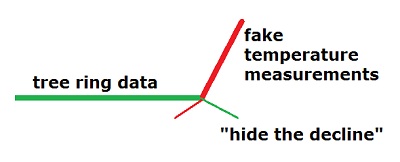From 1850 on all CO2 increases in the atmosphere were from humans, there was no 'natural' warming period then.
https://judithcurry.com/2012/07/29/a-new-release-from-berkeley-earth-surface-temperature/
Seems to me there was a noticeable natural warming trend that happened way before 1850 and continues until today, with the added benefit of human greed and stupidity since the 1950's.
Bad science. Check again.
That was a misstatement, I'll let this
press release from NASA explain it better.
Of particular importance is the sun's extreme ultraviolet (EUV) radiation, which peaks during the years around solar maximum. Within the relatively narrow band of EUV wavelengths, the sun’s output varies not by a minuscule 0.1%, but by whopping factors of 10 or more. This can strongly affect the chemistry and thermal structure of the upper atmosphere. Several researchers discussed how changes in the upper atmosphere can trickle down to Earth's surface. There are many "top-down" pathways for the sun's influence.
For instance, Charles Jackman of the Goddard Space Flight Center described how nitrogen oxides (NOx) created by solar energetic particles and cosmic rays in the stratosphere could reduce ozone levels by a few percent. Because ozone absorbs UV radiation, less ozone means that more UV rays from the sun would reach Earth's surface.
Isaac Held of NOAA took this one step further. He described how loss of ozone in the stratosphere could alter the dynamics of the atmosphere below it. "The cooling of the polar stratosphere associated with loss of ozone increases the horizontal temperature gradient near the tropopause,” he explains. “This alters the flux of angular momentum by mid-latitude eddies. [Angular momentum is important because] the angular momentum budget of the troposphere controls the surface westerlies." In other words, solar activity felt in the upper atmosphere can, through a complicated series of influences, push surface storm tracks off course.
Caspar Amman of NCAR noted in the report that "When Earth's radiative balance is altered, as in the case of a change in solar cycle forcing, not all locations are affected equally. The equatorial central Pacific is generally cooler, the runoff from rivers in Peru is reduced, and drier conditions affect the western USA."
Much has been made of the probable connection between the Maunder Minimum, a 70-year deficit of sunspots in the late 17th-early 18th century, and the coldest part of the Little Ice Age, during which Europe and North America were subjected to bitterly cold winters. The mechanism for that regional cooling could have been a drop in the sun’s EUV output
The point I was trying to make was reduced solar output changes the poles temperature, the jet stream shifts towards the equator, all areas between the jet stream and poles are in cold country, if your toward the equator it's hotter and wetter, more water is evaporated at the equator and transported to the poles, more snow is put down reflecting sunlight back to space.
Now, If you notice the picture below of observed sun spots. Sun-spots were observed in the past to inform how active or inactive the sun was, today it's called pseudoscience.
I wonder how all that energy at the peak in 1950, and successive cycles, was absorbed and distributed over the next many years.
Considering our oceans absorb 50% of the sun's energy and store 1000x more heat than our atmosphere,
I wonder if ENSO events gained in magnitude and frequency, by releasing all that stored energy as evaporation.
I will let
NOAA explain what the ENSO is
El Niño and La Niña are opposite phases of what is known as the El Niño-Southern Oscillation (ENSO) cycle. The ENSO cycle is a scientific term that describes the fluctuations in temperature between the ocean and atmosphere in the east-central Equatorial Pacific (approximately between the International Date Line and 120 degrees West). La Niña is sometimes referred to as the cold phase of ENSO and El Niño as the warm phase of ENSO. These deviations from normal surface temperatures can have large-scale impacts not only on ocean processes, but also on global weather and climate.
Here is ENSO surface temp data from
NOAA for all events from 1981 -2016. (click link if you want to see data back to 1950)
DESCRIPTION: Warm (red) and cold (blue) episodes based on a threshold of +/- 0.5oC for the Oceanic Niño Index (ONI) [3 month running mean of ERSST.v3b SST anomalies in the Niño 3.4 region (5oN-5oS, 120o-170oW)], based on centered 30-year base periods updated every 5 years. For historical purposes cold and warm episodes (blue and red colored numbers) are defined when the threshold is met for a minimum of 5 consecutive over-lapping seasons.
Seems to me our current ENSO cycle has raised global temps by ~2ºC all by itself.
Until there's no more stored heat in the ocean.











